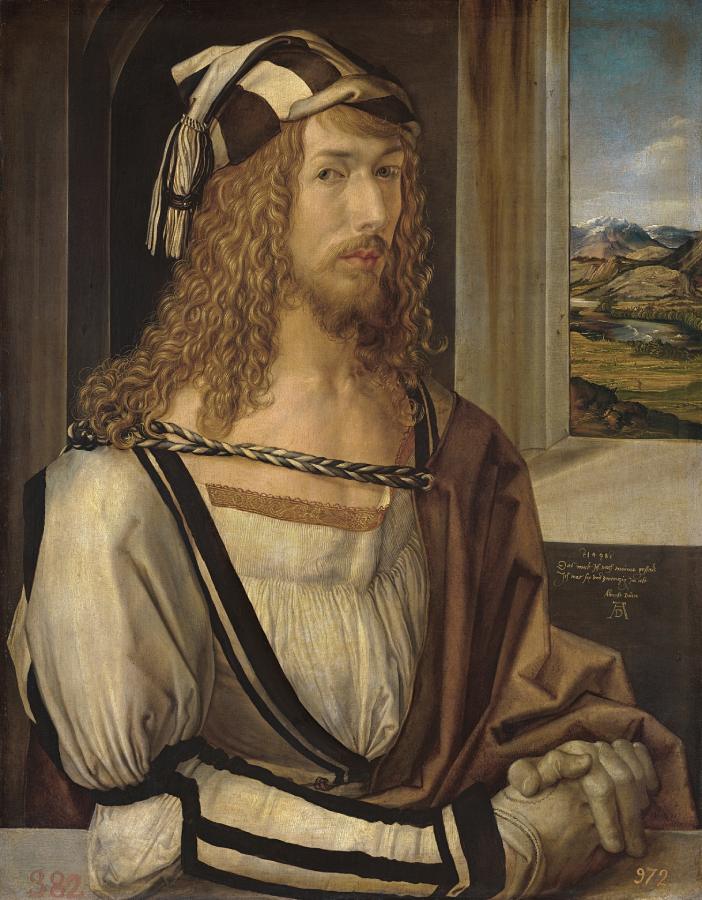Dürer, Albrecht (1471-1528)
Self-portrait
1498
Oil on panel, 52 x 41 cm
Museo del Prado, Madrid
In the same year that he published the Apocalipsis cum figuris, Dürer painted himself as a gentleman, dressed in light toned clothes and looking his best. He wears an open black and white doublet with a striped cap in the same colours, an undershirt trimmed with gold and a silk cord of blue and white threads holding up a grey-brown cloak that falls over his right shoulder. Dürer has sheathed the hands that he uses to paint in grey kidskin gloves indicative of high rank with the aim of elevating his social status from that of craftsman to artist and of locating painting among the liberal arts, as in Italy. The artist chose a half-length, three-quarter format with two focuses of attention: the face and hands. He located himself in a room that opens onto the outside through a window in the back wall, following Dieric Bouts’ Portrait of a Man of 1462 (London, National Gallery), a format that was subsequently widely adopted in Flanders and Italy. Basing himself on this Flemish format, Dürer added an Italian monumentality in the verticals and horizontals that create the window surround, also evident in the arrangement of his body which repeats the ‘L’ shape of the window in the bust, firmly supported by the arm leaning on the foreground ledge. Also present in this work is a characteristic of all Dürer’s exquisitely detailed portraits, namely his powers of psychological analysis, evident in the contrast between the sensual features and the cold, penetrating gaze. A painter, printmaker and art theoretician, Albrecht Dürer was born in Nuremberg, gaining fame in his own lifetime through his prints. Dürer trained under the influence of Flemish painting while his two trips to Venice (1494–5 and 1505–7) allowed him to discover the secrets of Renaissance art. A successful portraitist and printmaker, he worked for the Emperor Maximilian I, who granted him a pension in 1515, which was renewed by Charles V in 1520. In 1636 the City Council of Nuremberg gave this Self-portrait to Charles I of England. Following Charles’ overthrow and execution, it was sold at his posthumous sale in 1651. The Spanish ambassador Alonso de Cárdenas acquired it for Don Luis de Haro, who gave it to Philip IV in 1654. It remained in the Spanish royal collection until it entered the Museo del Prado in 1827 (Silva Maroto, P. en: El retrato del Renacimiento, 2008, p. 486). (MNP)
See also:
• Charles I (England)
